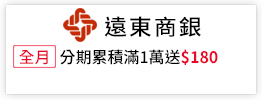The Dietary Guidelines for Americans1 (DGAs) provide extensive, evidence-based information on what constitutes a healthy diet. The goals of the DGAs are to help Americans maintain and improve their health status and prevent diet-related chronic conditions. They are reviewed and updated every five years by researchers in the fields of medicine, nutrition, and health to best represent new findings to guide diet and physical activity recommendations. The 2015 DGAs emphasize the importance of a healthy dietary pattern by providing recommendations for foods to include and limit in one’s diet. It is important to include vegetables from all subgroups (dark green, red and orange, legumes, starchy), fruits (particularly whole), grains (at least half as whole grains), fat-free and low-fat dairy, protein foods from lean meat and poultry, seafood, legumes, nuts and seeds, and soy, and mono and poly unsaturated oils. Foods that should be limited are those high in saturated and trans fats, added sugars, and sodium. To help Americans put these recommendations into practical use quantitative guidelines are provided as follows: less than 10 percent of total calories should come from added sugars, less than 10 percent of total calories should come from saturated fats, and individuals should consume less than 2,300 mg of sodium per day1.
Researchers interested in assessing diet intake and dietary patterns, and determining its quality most commonly utilize food frequency questionnaires (FFQs), 24-hour dietary recalls, and dietary records2. FFQs collect dietary intake data from a long period of time (1-12 months) and therefore provide a good representation of the individual’s long-term dietary pattern. Twenty-four hour recalls are collected via interview from individuals using prompts to help people remember the foods and the amounts they consumed. However, 24-hour recalls can misrepresent a person’s normal dietary pattern and is subject to recall bias. In contrast, dietary records require detailed information on everything a person consumes over a given period of time (most commonly three days)2. Each method has its own advantages and disadvantages if used in a research study, and the method should be selected based on the research questions and outcomes2. Once dietary intake is obtained, it can be analyzed to determine its quality in relation to the DGAs.
The Health Eating Index (HEI)3 score is a tool used to determine diet quality in relation to the DGAs or, in other words, how closely a person is following the recommendations. HEI scores are calculated using diet records such as FFQs and 24-hour recalls. HEI scores are an excellent measure of dietary intake and quality because they are broken down into food group subcomponent scores. The HEI scoring systems considers the food groups that should be limited (saturated fat, added sugars, sodium, and refined grains) and are labeled moderation components. A higher moderation component scores is indicative of lower intakes4. Adequacy components
(total fruit, whole fruit, total vegetable, greens and beans, whole grains, dairy, total protein foods, fatty acids, and seafood and plant proteins) are food groups that are encouraged to be consumed, and a higher score is indicative of higher intake. Total HEI scores range from 0-100, with 100 being indicative of total adherence to the DGAs. Scores less than 51 are considered to be poor, scores between 51-80 need improvement, and scores 81 and above are considered to be good quality5. Preventing diet-related chronic diseases is a clear goal of the DGAs1. Assessing diet quality through HEI scores can provide data on associations between diet quality and chronic disease prevalence.



 天天爆殺
天天爆殺  今日66折
今日66折 
























 博客來
博客來 博客來
博客來 博客來
博客來 博客來
博客來 博客來
博客來